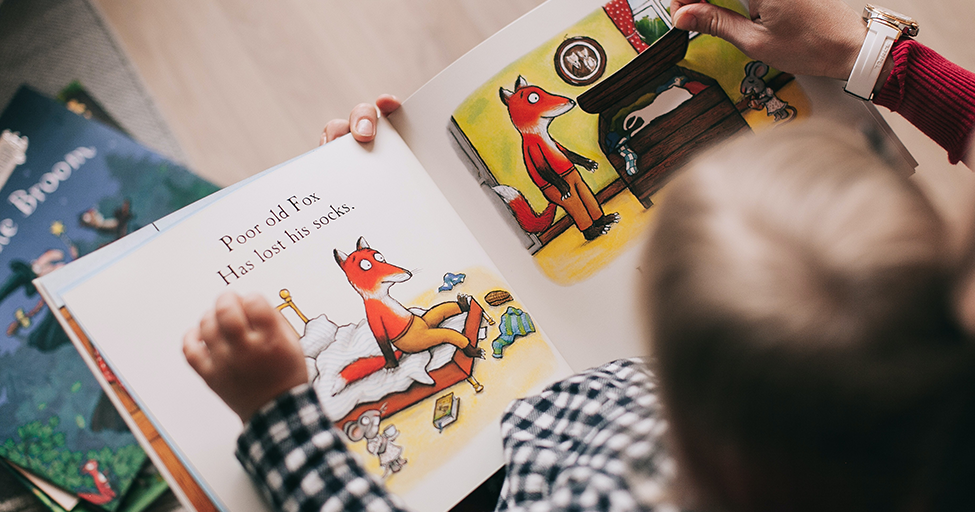
How to Design a Back Book Cover
April 20, 2022
Guide to Children’s Book Design
May 18, 2022How to Design a Book Jacket

What is a book jacket and why does your book need one?
A book jacket—also called a dust cover or dust jacket—is the paper book cover that wraps around your book. Although it’s usually used on hardcover books, some paperbacks use a book jacket as well.
Book jackets provide both critical and helpful information about your book. And that’s just one of the purposes that a book jacket serves.
Purpose of a book jacket
One of the main purposes of a book jacket is to protect the book itself. Sometimes a reader might drop the book or spill liquid on it, and the jacket takes the brunt of the damage to keep the book itself safe.
Another main purpose is book marketing. Your book jacket acts as a sales tool to entice a potential reader to dive into the story within. Since a jacket provides more space than the actual book cover, you can really provide your reader with some great information.
Factors that lead a book to needing a jacket
The main factor in whether your book needs a jacket is the type of book you’re creating. Obviously, since jackets only apply to written books, you won’t need one if you’re only publishing an e-book.
However, you might want to seriously consider a jacket if you’re printing a hardcover. Since a book jacket provides protection to the book itself, a hardcover often deserves a jacket—particularly when compared to its less expensive paperback counterpart.
How to tell if your book should have a jacket
Book jackets should be impressive. They convey that a book is high quality simply because it deserves the protection that a jacket provides. If you want to convey that perception to your audience, you should consider a book jacket.
Additionally, your book might need a jacket if you have a lot of information to provide to your readers. A standard book cover includes the front cover design, back cover design, and spine. A book jacket has more real estate with flaps that fold over the cover.
Elements of a good book jacket
A good book jacket design isn’t just thrown together overnight. It requires careful planning, and in some cases, a skilled designer. Because the jacket is the first thing your potential reader will see, it’s important to make a good impression. People judge a book by its jacket, and you can help control how they perceive it!
Why people judge a book by its jacket
The book cover design printed on your book jacket tells the reader all about the book itself. The jacket is more than just a front cover, spine, and back cover. It of course includes the book title, author name, and publisher, if applicable. And the actual image or illustration and typography or font give your reader an idea of your book’s theme.
Think about the last time you picked up a book from your local library or bookstore. As you perused the hardcovers, you probably made your choice largely thanks to the jacket. You likely also noticed the elements that each book cover included that provided you information about each book and its contents.
Core elements that all book jackets should have
Every book jacket is unique in design and the information it provides. However, there are several core elements that all book jackets should have, which are often organized by placement on the jacket.
Here are a few elements that the front cover should include:
- Book title
- Book subheading or tagline
- Author name
- Editor name, if applicable
- Publisher name, if applicable
The back cover should also include its own elements, such as:
- Book blurb or description that summarizes your story
- Publisher information, if applicable
- ISBN barcode
And don’t forget about the spine! This is the simplest part of your entire book jacket. The spine usually includes the full title, the author name—sometimes just the last name if there’s not much space—and the publisher.
In addition to these core elements, there are a few optional elements that you can include.
Optional elements to include—and why you might want them
Although you don’t want your book jacket design to feel too cluttered, you might want to consider adding some optional elements to give your readers more information about your book.
For example, it’s not necessary to include background imagery on your book jacket, but it sure goes a long way to impress and communicate with a potential reader. Adding a creative background design like a photo, illustration, or color scheme that hints at your book’s theme and tone can really entice someone to purchase your book.
Additionally, it never hurts to have a book review or a testimonial from a happy reader or industry professional! Many people in the book industry—including other writers—are happy to promote authors and their work. Consumers love to read reviews, so this could really go a long way to helping you ring up some book sales.
Finally, consider adding an author bio and photo to your book jacket. The flaps that fold around the book cover are a great place for this! Let your readers know a little bit about you and what inspired you to write the book. If a potential reader feels a connection to you as the author, they might be more inclined to read your book cover to cover.
How to design your own book jacket
Book jacket and cover design are not only important to how your target audience perceives your book—they’re also art forms that often require a talented designer. However, great design costs money. If you don’t have much of a budget for your book, you might consider designing your own book jacket.
How to know if you’re ready to design your own book jacket
On the surface, it might seem pretty simple to design your own book jacket. After all, it’s just typing some basic information onto a page, right? Wrong!
There’s a full design process to creating a book jacket. If you want to determine whether you’re ready to tackle the design on your own, start by asking yourself a few questions:
- Do you have access to graphic design software like the Adobe Creative Suite or Canva, and do you know how to use these programs?
- Where can you find a stock image or illustration to include on your jacket?
- Do you have a template for your book jacket, or do you have to set up the file?
- Are you familiar with design terms like resolution, bleed, and artboard?
If you’re not sure how to answer these questions, you’ll need to spend some time educating yourself on how to design your own book jacket. And during your research, be sure to read up on the legal ownership of the images and typography you choose to use.
How to make sure not to infringe on copyrighted materials for your book jacket
When you design a book jacket, you have to be careful not to use someone else’s work without express written permission. Many design elements like images and fonts you’ll find online are protected, so you could run into copyright infringement.
If you fall in love with an illustration, photo, or graphic for your book’s cover, make sure you understand who actually owns that image. You don’t want to publish something on your cover and later be sued by the person who snapped the picture or designed the image. The same is true for typography. Each font could be a professional designer’s intellectual property.
One way to avoid copyright infringement is to visit a stock image website. These sites often allow a person to purchase images and use them at their will. However, you’ll still have to read the fine print to make sure you’re allowed to publish it as part of your book.
Other things to keep in mind when designing your own book jacket
As you plan your book cover design, there are a few more things to keep in mind. You want to include a font and graphic that fit into your genre. So explore your options and make the right choice!
It never hurts to take a look at what other authors in your genre are doing. Check out some recently published books and inspect their jackets closely. You’ll likely find some book jackets that successfully communicate information about the author and the book itself. And you’ll come across other book jackets that aren’t quite as effective. Use this for inspiration! Springboard off of what works in the examples you find, and disregard the less successful jackets.
Additionally, determine what exactly you want on your book jacket. Thanks to the flaps that fold over the actual book cover, you have more room to work with on a book jacket. If you use every square inch of space wisely, you’ll create an effective book jacket that will entice potential readers.
When to hire a book jacket designer
Most authors don’t have professional design experience. And that’s okay! A professional book cover designer can create a stunning jacket that will attract and intrigue readers. If you’re ready to invest in your book and make a splash as a successful author, it might be time to hire a book jacket designer.
How to know when it’s time to hire a book jacket designer
There are two main factors that will help you decide when it’s time to hire a book jacket designer:
- You’re not comfortable with elements of the design process like setting up a template or creating a custom graphic image, and you want a professional to handle the design for you.
- You want your book jacket to have a “wow” factor to ring up book sales and help make a name for you as a serious and professional author.
You can hire a professional designer not just with graphic design experience, but also with experience in the publishing industry. These experts can create and execute a stellar design concept that will grab more readers’ attention than a jacket designed by a novice.
Things to keep in mind when working with a book jacket designer
When you work with a professional cover designer, you want to make sure that you communicate the information that you want your book jacket to convey. Explain your book’s genre, story, and tone to give your designer a thorough understanding of the experience you want your readers to have.
Once you’ve decided to hire a professional designer, you can concentrate on finding the right one for your book.
How to find the right designer
As an author, you take a lot of pride in your book. And you want to work with a book jacket designer who takes a lot of pride in their work.
Don’t just sign on with the first designer you find. Look around and review multiple design portfolios. When you find a designer whose style you like, talk to them about your project. Make sure you feel comfortable with them and feel confident in their work. After all, they’re going to create your book jacket design, and therefore provide your first impression to your readers.
Your book deserves an Elite book jacket design
The world is ready to read your book. You just have to show off a great book jacket design to draw them in!
Elite Authors knows how important design is. And we take great pride in making beautiful books. Learn more about our book cover design services!


